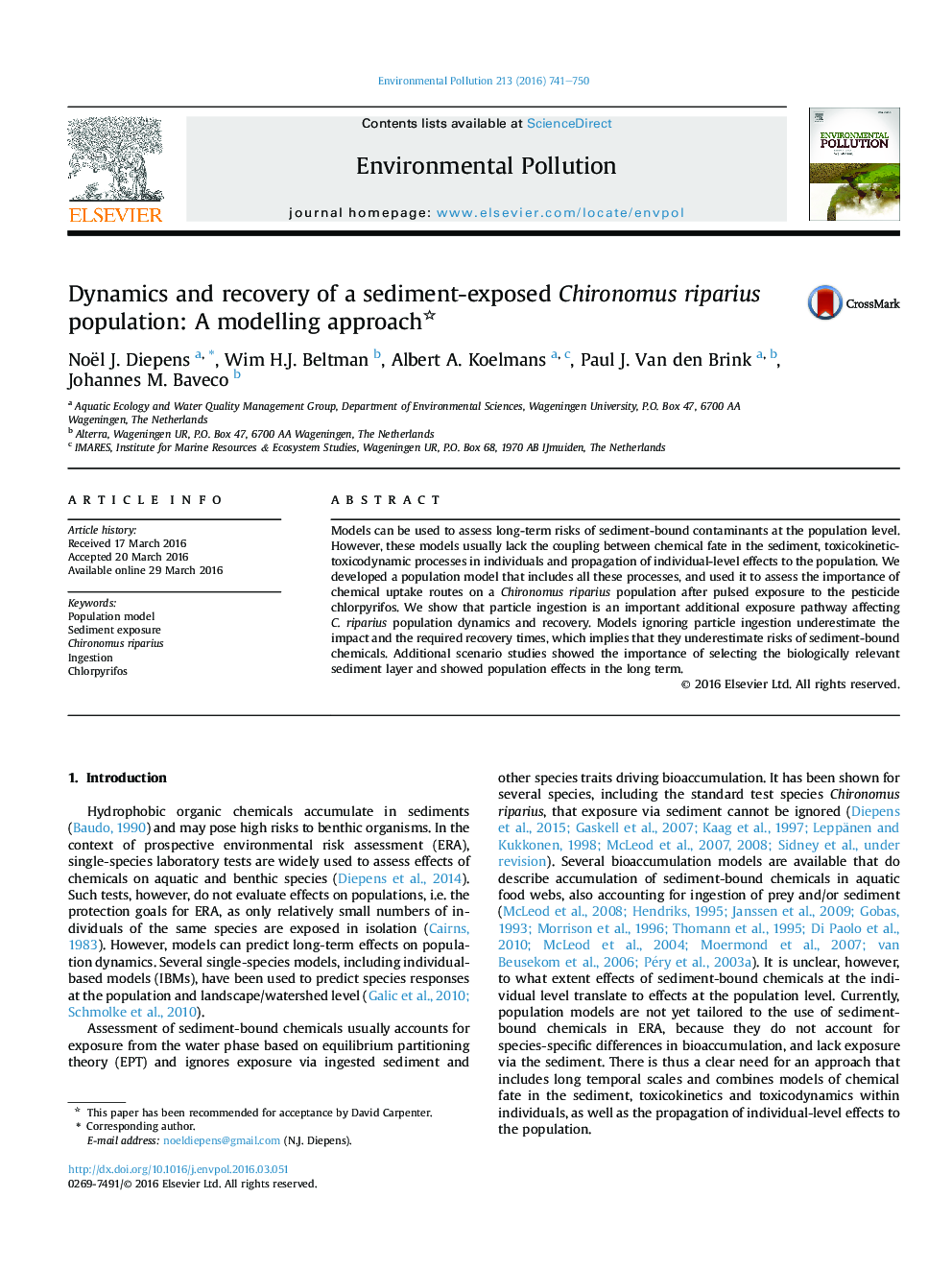| Article ID | Journal | Published Year | Pages | File Type |
|---|---|---|---|---|
| 6314997 | Environmental Pollution | 2016 | 10 Pages |
â¢The response of a Chironomus riparius population to a toxicant pulse exposure was modelled.â¢The spatiotemporally explicit model includes exposure via the sediment.â¢The population response after exposure was highly dependent on sediment ingestion.â¢Assumed sediment mixing layer thickness and simulation time affected exposure.â¢Ignoring ingestion leads to underestimation of the risks of sediment-bound chemicals.
Models can be used to assess long-term risks of sediment-bound contaminants at the population level. However, these models usually lack the coupling between chemical fate in the sediment, toxicokinetic-toxicodynamic processes in individuals and propagation of individual-level effects to the population. We developed a population model that includes all these processes, and used it to assess the importance of chemical uptake routes on a Chironomus riparius population after pulsed exposure to the pesticide chlorpyrifos. We show that particle ingestion is an important additional exposure pathway affecting C. riparius population dynamics and recovery. Models ignoring particle ingestion underestimate the impact and the required recovery times, which implies that they underestimate risks of sediment-bound chemicals. Additional scenario studies showed the importance of selecting the biologically relevant sediment layer and showed population effects in the long term.
Graphical abstractDownload high-res image (193KB)Download full-size image
